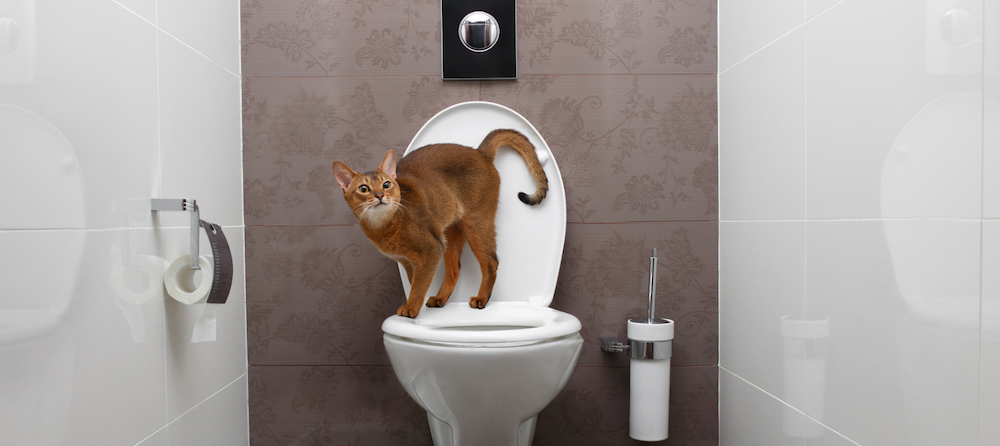Why You Should Never Flush Cat Poop Down Your Toilet - Important Facts
Why You Should Never Flush Cat Poop Down Your Toilet - Important Facts
Blog Article
Were you trying to locate selective information concerning Can You Flush Cat Poo or Litter Down the Toilet??

Introduction
As feline proprietors, it's vital to bear in mind how we get rid of our feline close friends' waste. While it might seem practical to purge pet cat poop down the toilet, this technique can have harmful effects for both the setting and human health and wellness.
Alternatives to Flushing
Thankfully, there are safer and a lot more accountable methods to take care of cat poop. Take into consideration the adhering to options:
1. Scoop and Dispose in Trash
One of the most typical technique of throwing away pet cat poop is to scoop it right into an eco-friendly bag and throw it in the garbage. Make sure to utilize a specialized trash scoop and get rid of the waste without delay.
2. Usage Biodegradable Litter
Select eco-friendly cat litter made from materials such as corn or wheat. These litters are eco-friendly and can be securely thrown away in the garbage.
3. Hide in the Yard
If you have a lawn, think about burying cat waste in an assigned area away from veggie yards and water resources. Make sure to dig deep adequate to stop contamination of groundwater.
4. Set Up a Pet Waste Disposal System
Purchase a family pet garbage disposal system specifically made for cat waste. These systems utilize enzymes to break down the waste, minimizing smell and ecological effect.
Health and wellness Risks
In addition to environmental concerns, flushing pet cat waste can likewise position wellness risks to human beings. Feline feces might consist of Toxoplasma gondii, a bloodsucker that can trigger toxoplasmosis-- a possibly serious ailment, specifically for expectant ladies and individuals with weakened immune systems.
Environmental Impact
Purging feline poop introduces harmful microorganisms and parasites right into the supply of water, positioning a considerable risk to aquatic communities. These impurities can negatively influence marine life and compromise water top quality.
Conclusion
Responsible pet possession prolongs beyond offering food and sanctuary-- it likewise entails correct waste management. By avoiding purging feline poop down the commode and choosing alternative disposal techniques, we can decrease our environmental footprint and protect human health.
Why Can’t I Flush Cat Poop?
It Spreads a Parasite
Cats are frequently infected with a parasite called toxoplasma gondii. The parasite causes an infection called toxoplasmosis. It is usually harmless to cats. The parasite only uses cat poop as a host for its eggs. Otherwise, the cat’s immune system usually keeps the infection at low enough levels to maintain its own health. But it does not stop the develop of eggs. These eggs are tiny and surprisingly tough. They may survive for a year before they begin to grow. But that’s the problem.
Our wastewater system is not designed to deal with toxoplasmosis eggs. Instead, most eggs will flush from your toilet into sewers and wastewater management plants. After the sewage is treated for many other harmful things in it, it is typically released into local rivers, lakes, or oceans. Here, the toxoplasmosis eggs can find new hosts, including starfish, crabs, otters, and many other wildlife. For many, this is a significant risk to their health. Toxoplasmosis can also end up infecting water sources that are important for agriculture, which means our deer, pigs, and sheep can get infected too.
Is There Risk to Humans?
There can be a risk to human life from flushing cat poop down the toilet. If you do so, the parasites from your cat’s poop can end up in shellfish, game animals, or livestock. If this meat is then served raw or undercooked, the people who eat it can get sick.
In fact, according to the CDC, 40 million people in the United States are infected with toxoplasma gondii. They get it from exposure to infected seafood, or from some kind of cat poop contamination, like drinking from a stream that is contaminated or touching anything that has come into contact with cat poop. That includes just cleaning a cat litter box.
Most people who get infected with these parasites will not develop any symptoms. However, for pregnant women or for those with compromised immune systems, the parasite can cause severe health problems.
How to Handle Cat Poop
The best way to handle cat poop is actually to clean the box more often. The eggs that the parasite sheds will not become active until one to five days after the cat poops. That means that if you clean daily, you’re much less likely to come into direct contact with infectious eggs.
That said, always dispose of cat poop in the garbage and not down the toilet. Wash your hands before and after you clean the litter box, and bring the bag of poop right outside to your garbage bins.
https://trenchlesssolutionsusa.com/why-cant-i-flush-cat-poop/

We had been shown that write-up on How to Dispose of Cat Poop and Litter Without Plastic Bags through a friend on another web address. Don't hesitate to set aside a second to share this content if you liked it. Thank-you for your time spent reading it.
Call Today Report this page